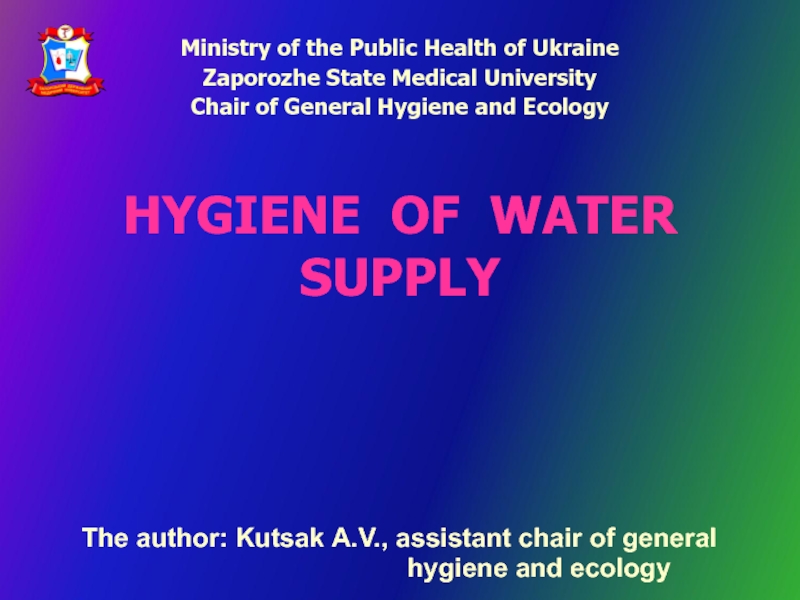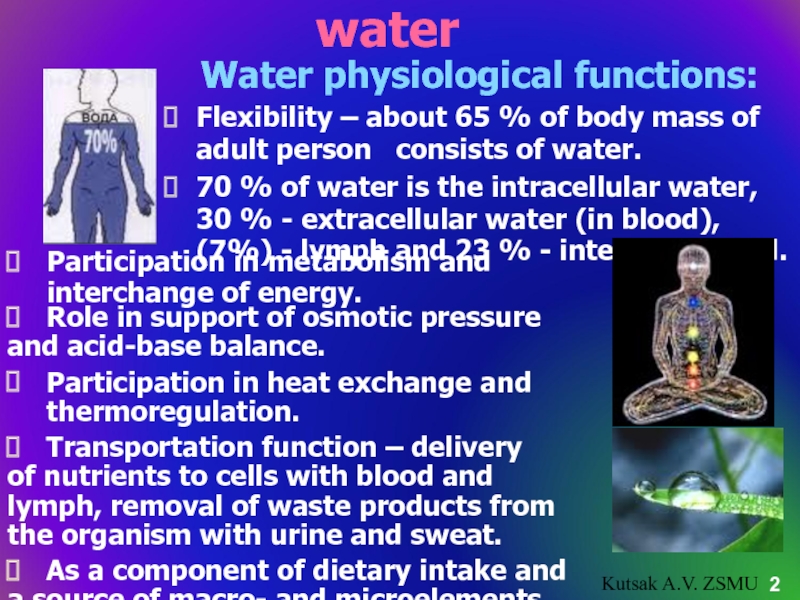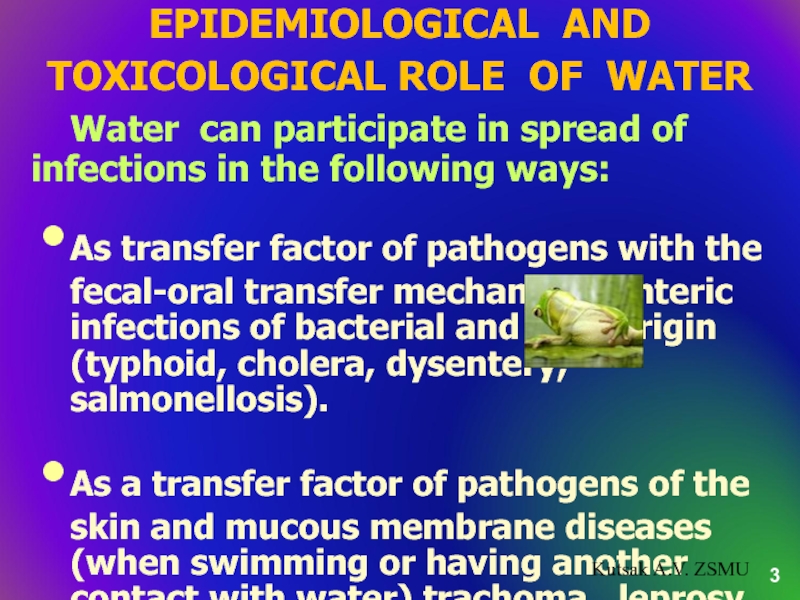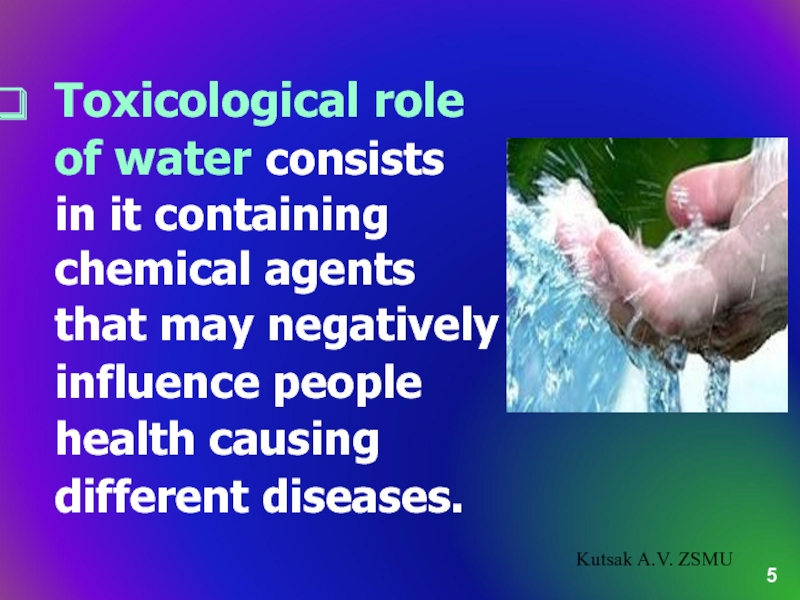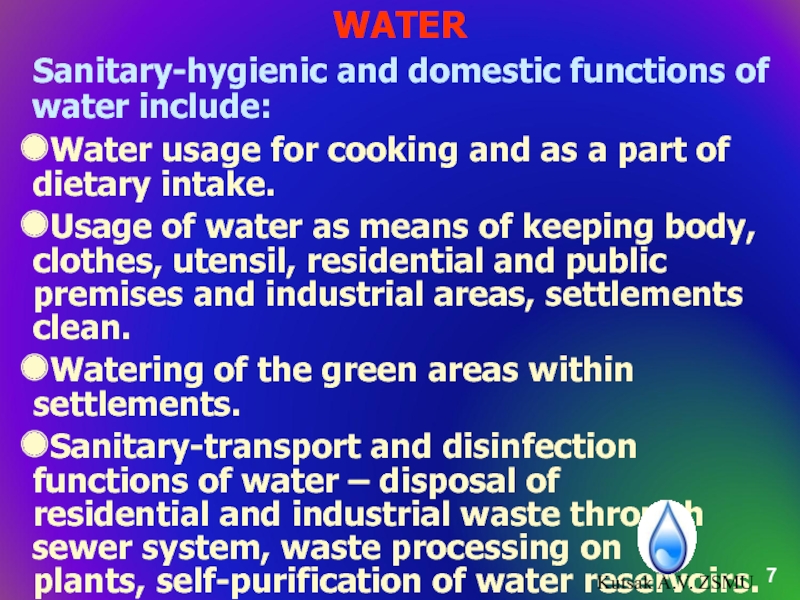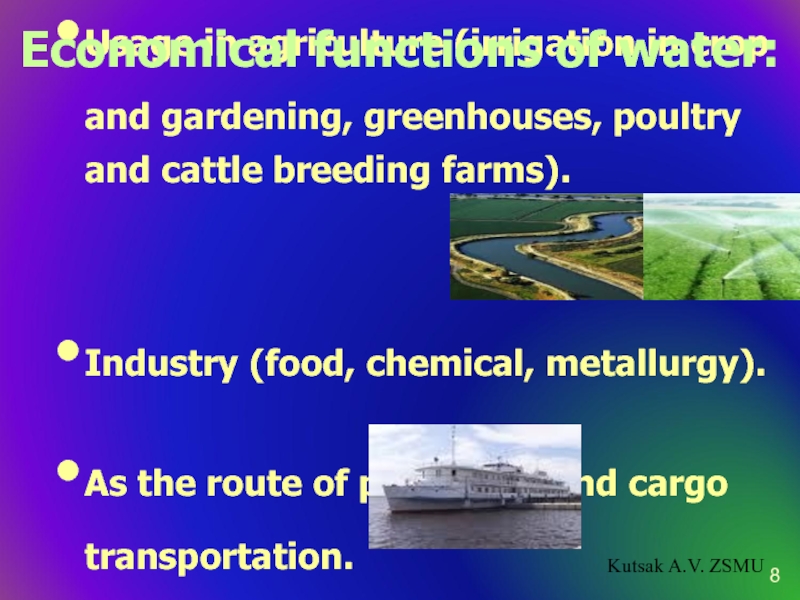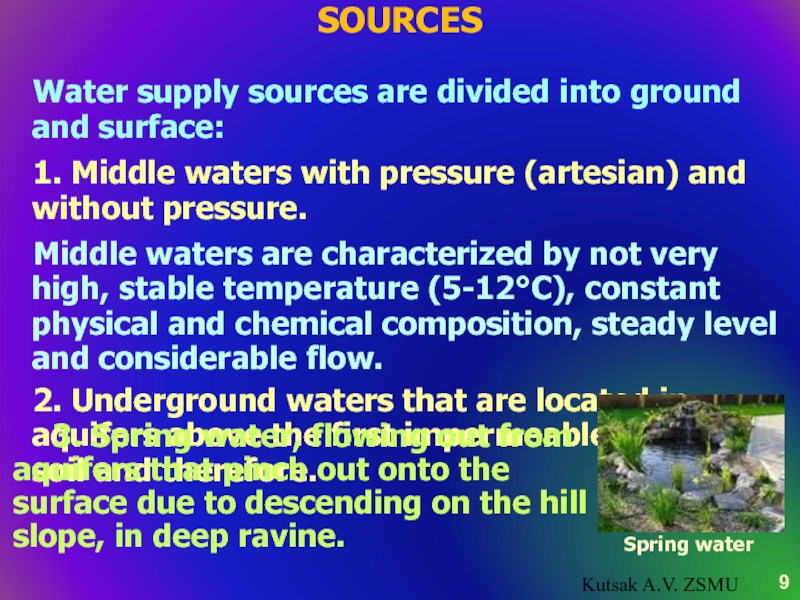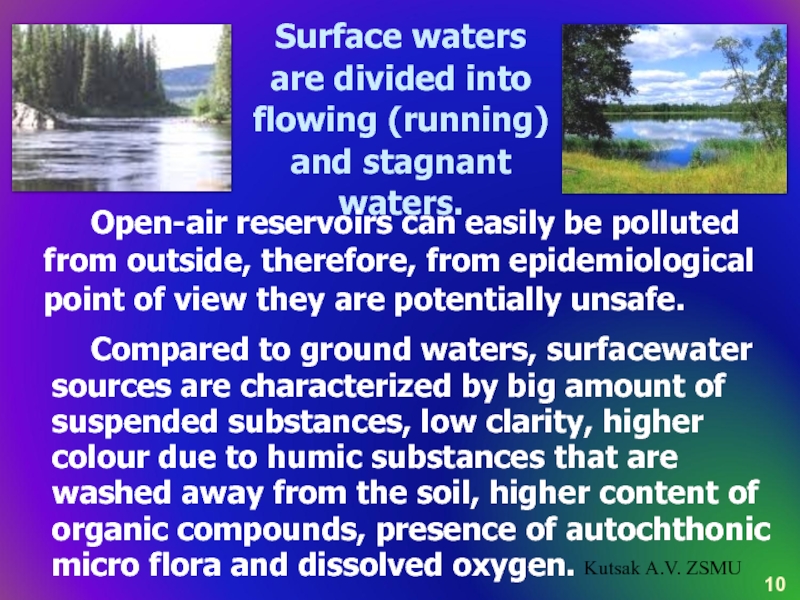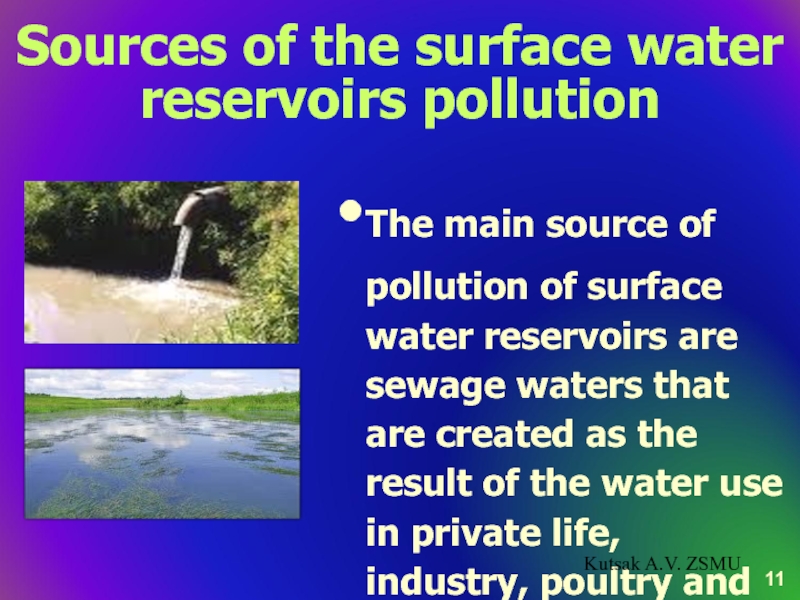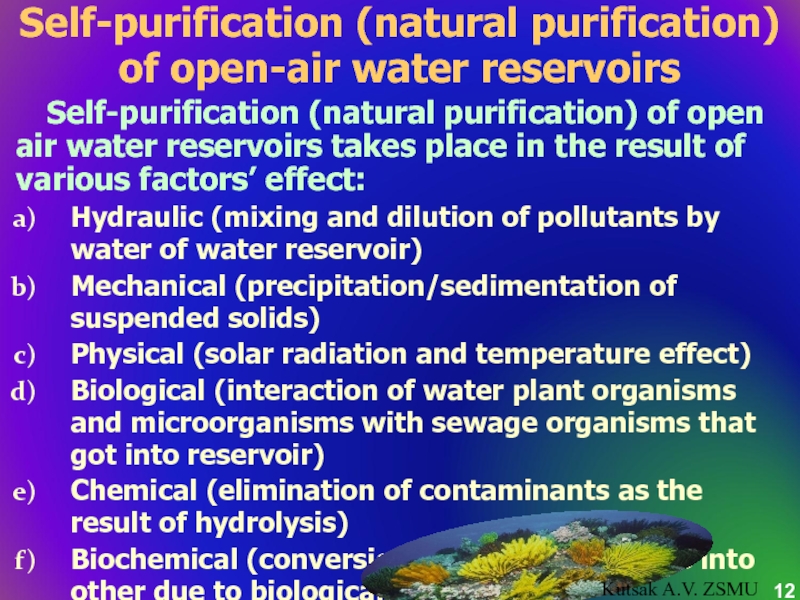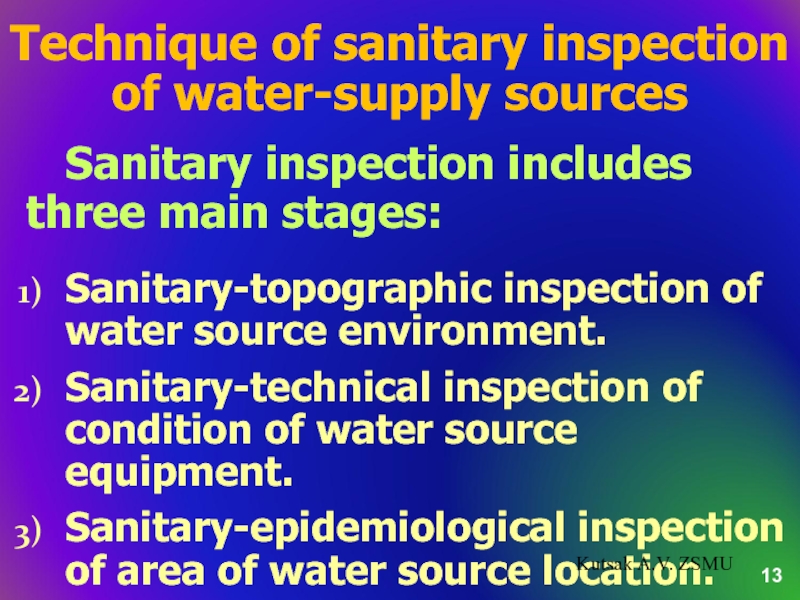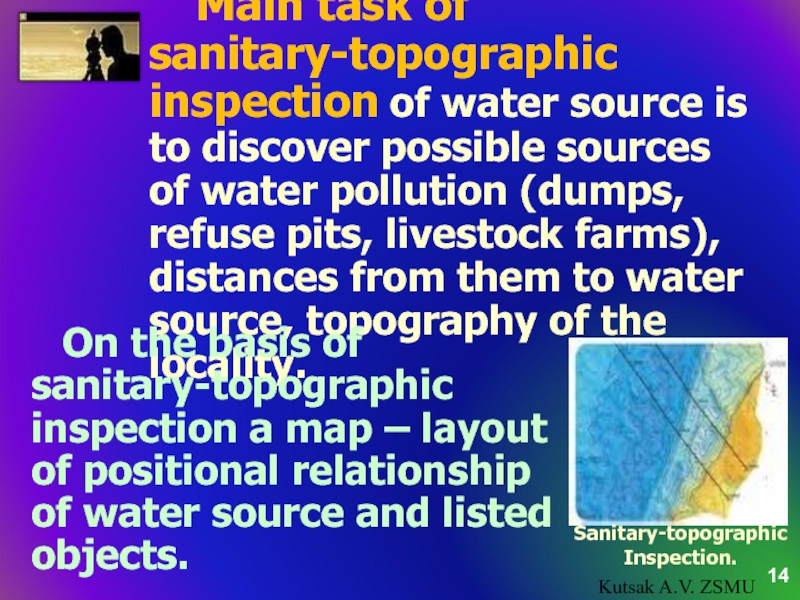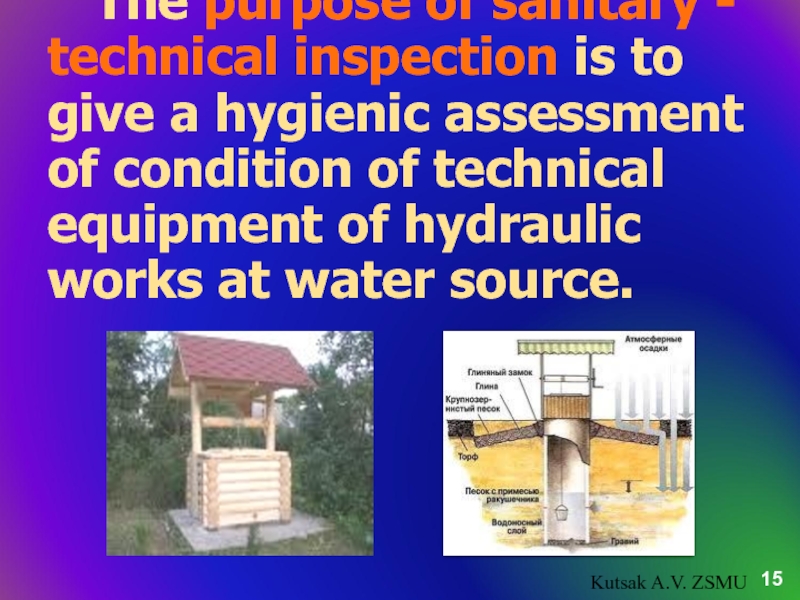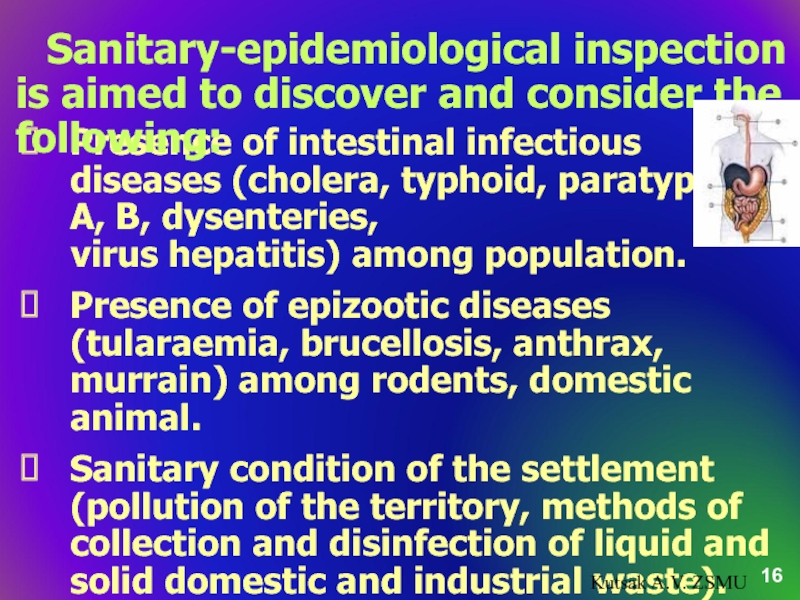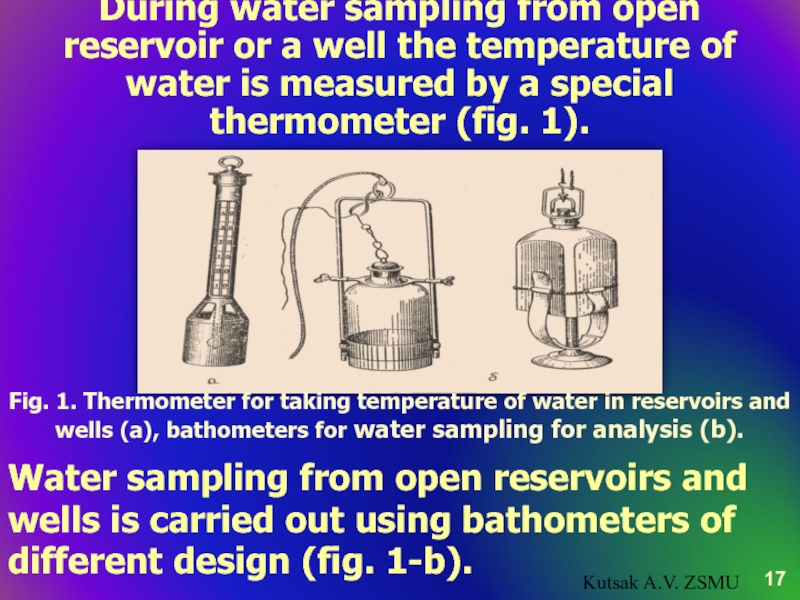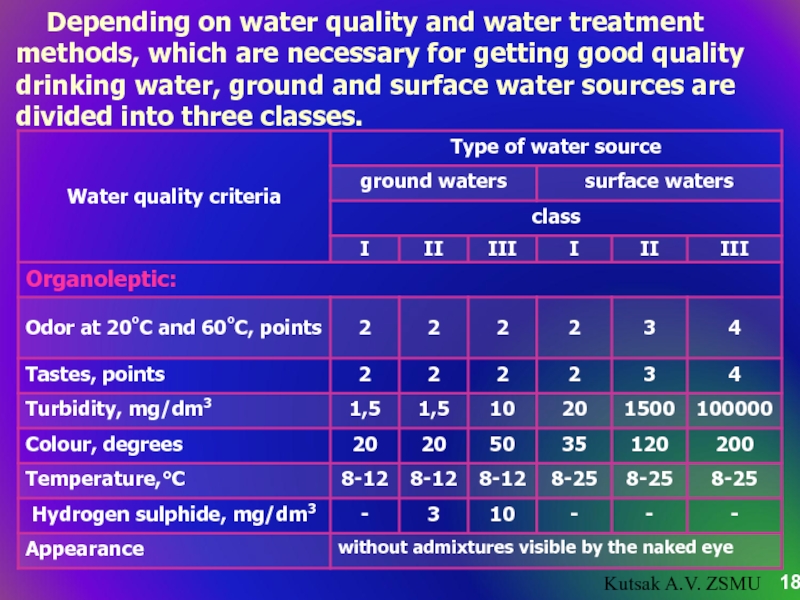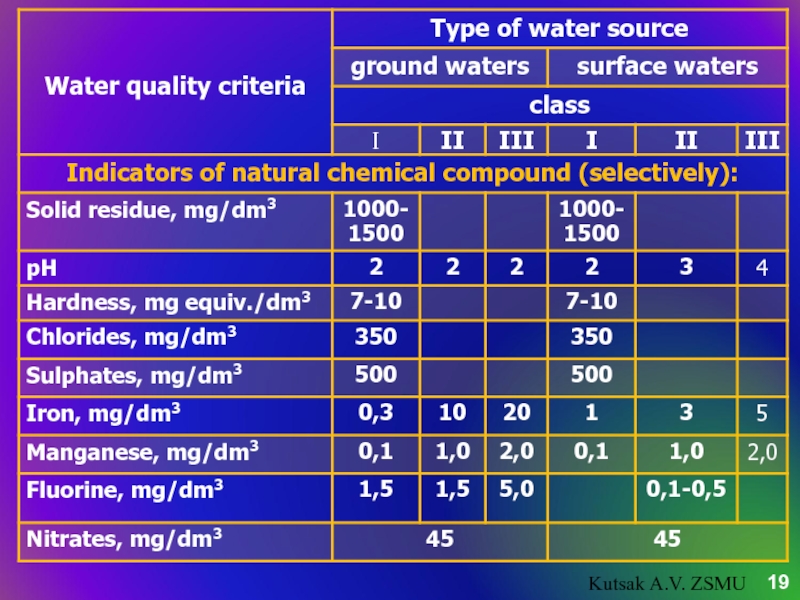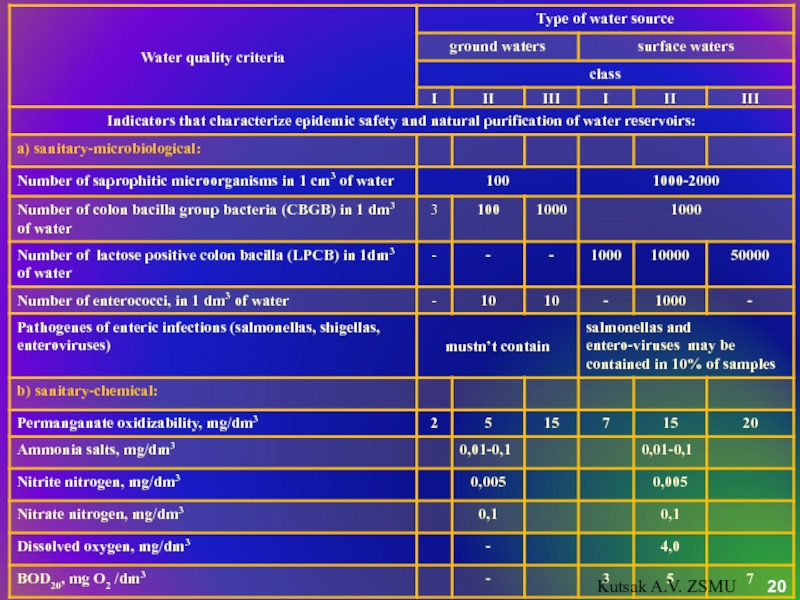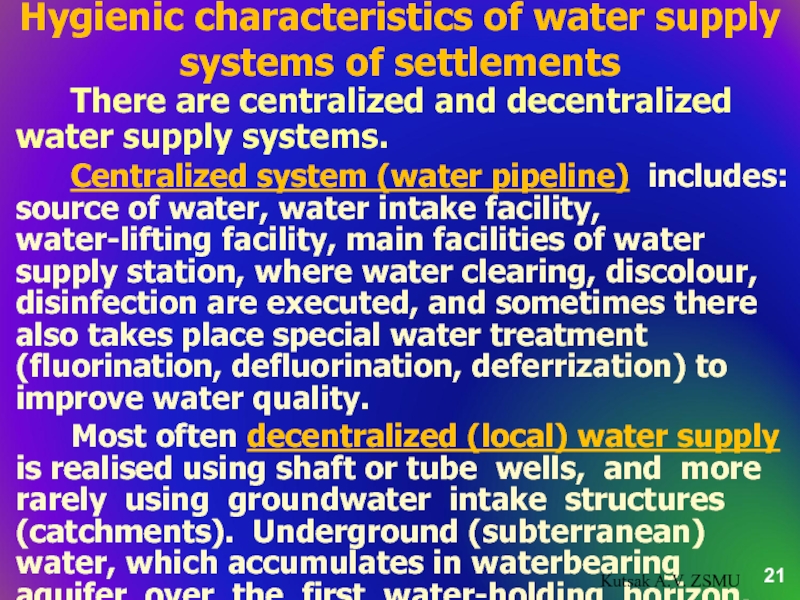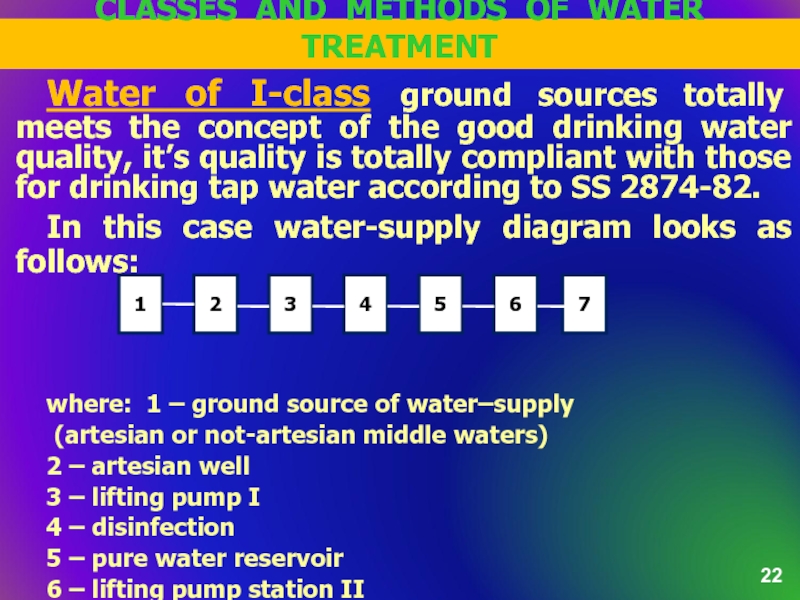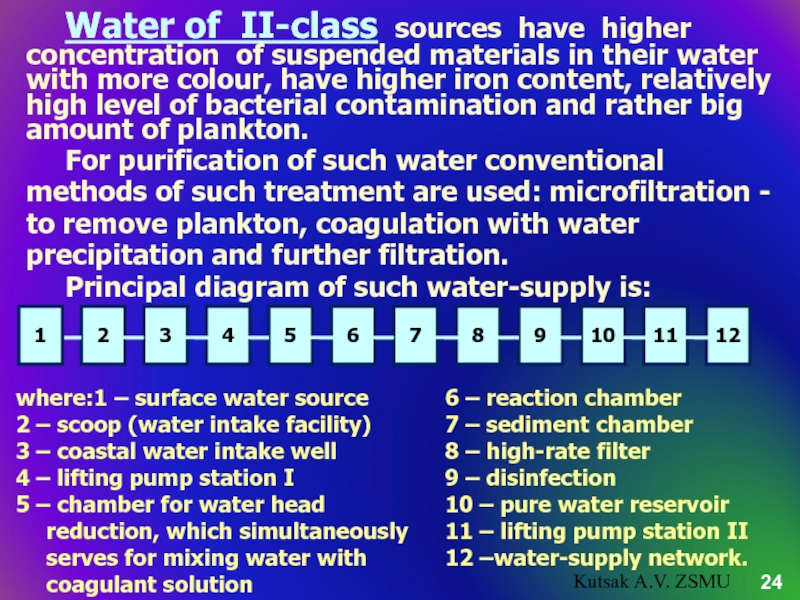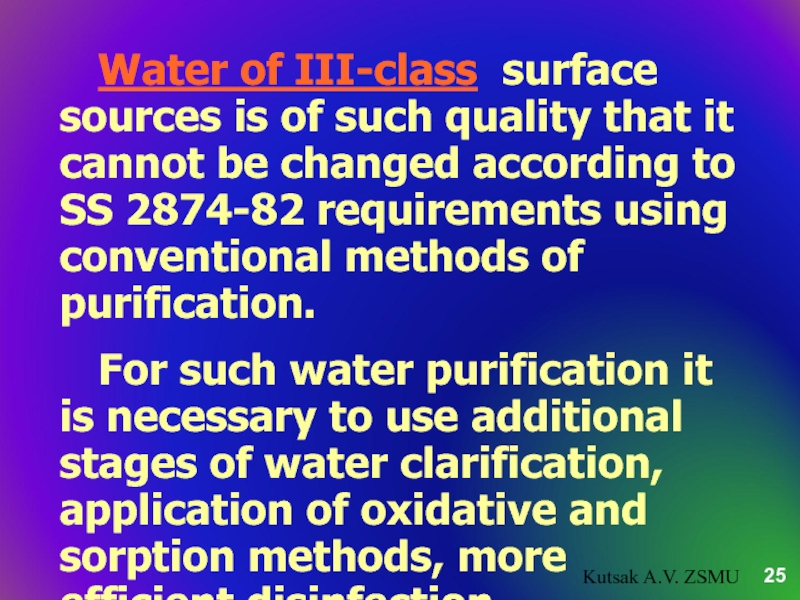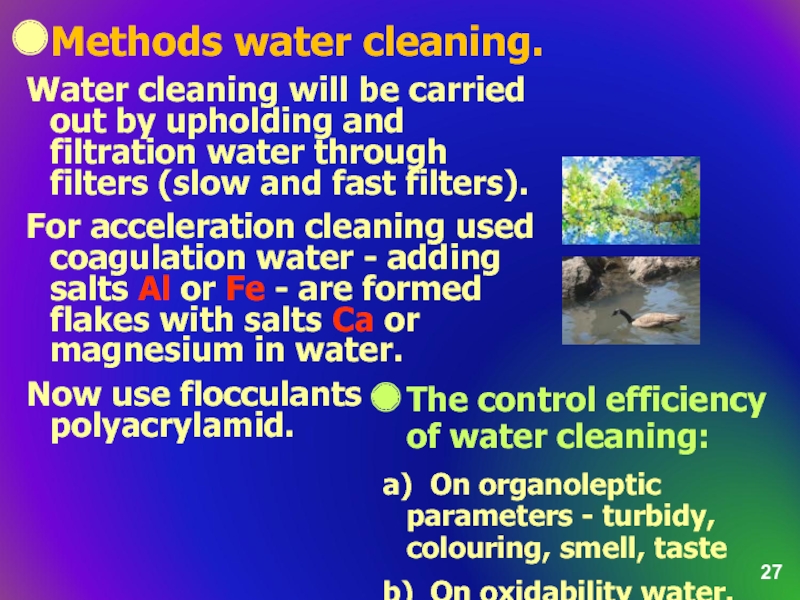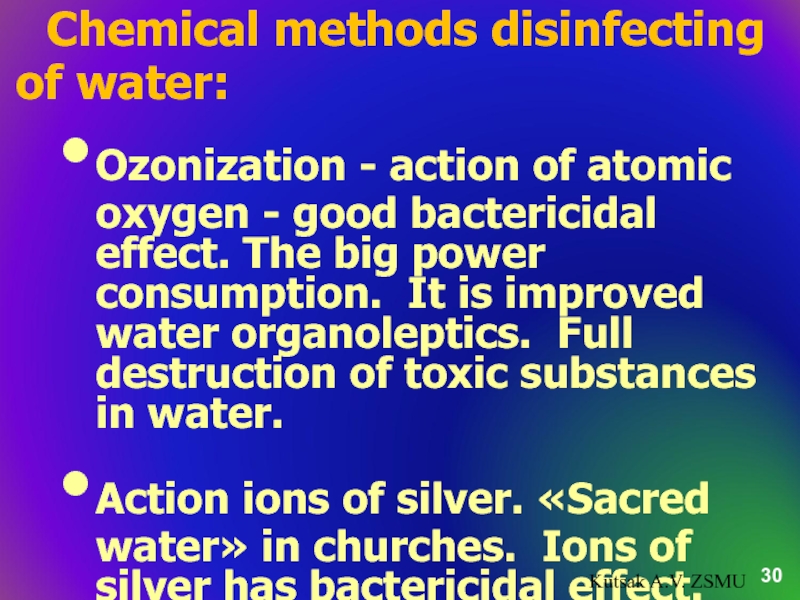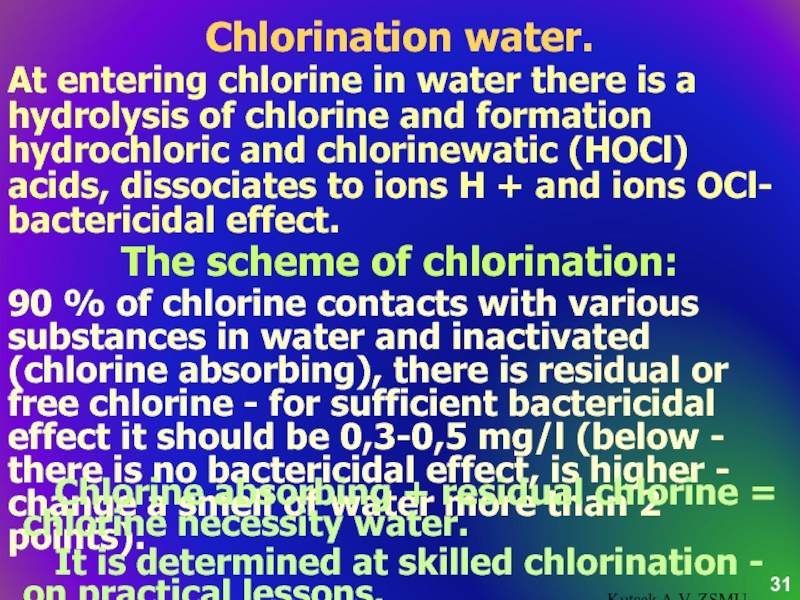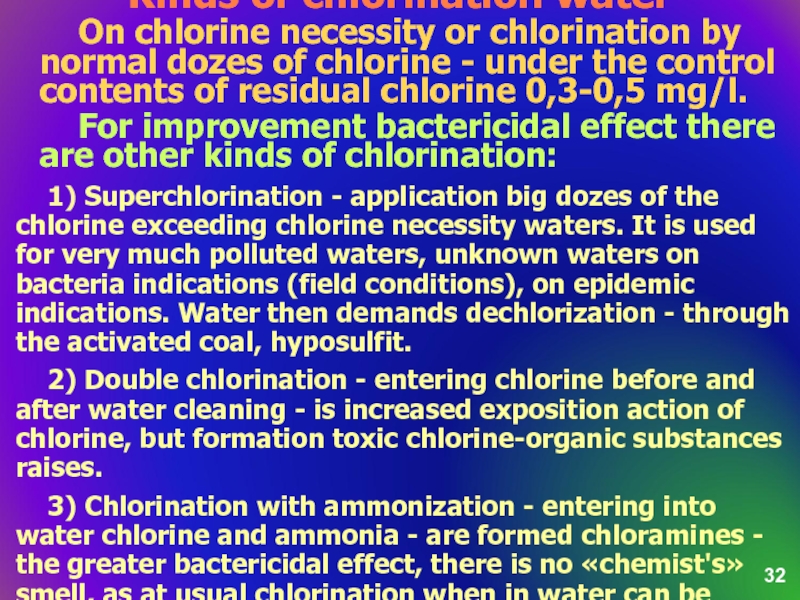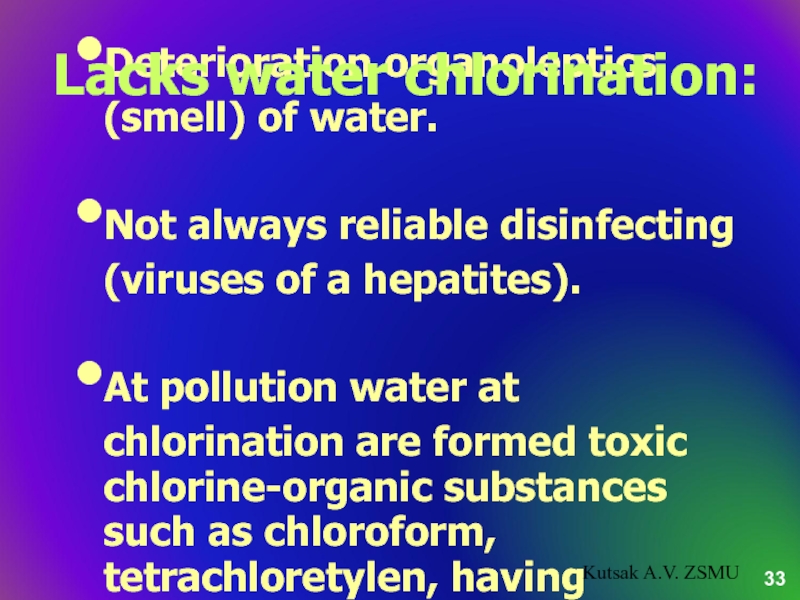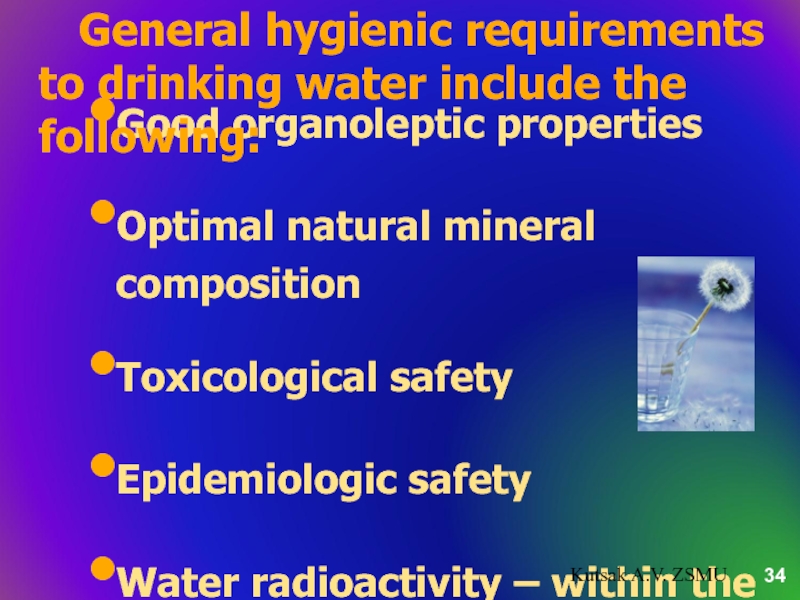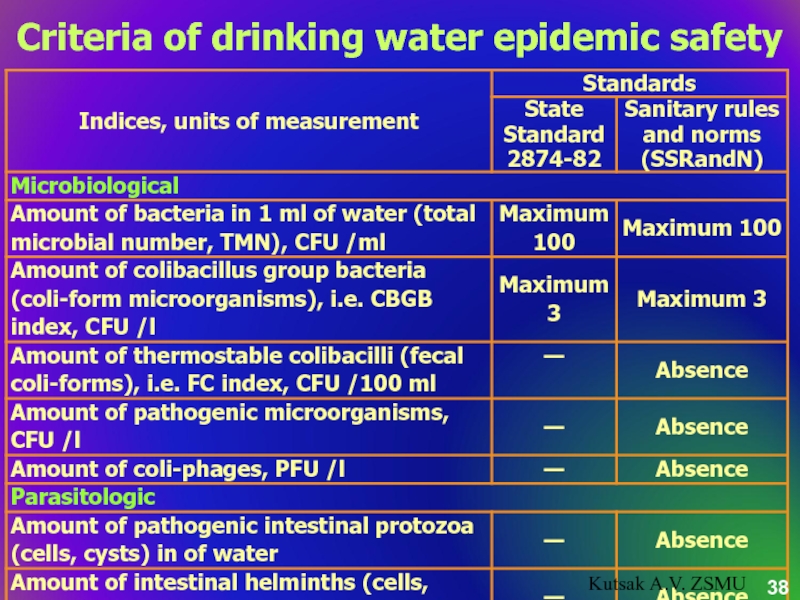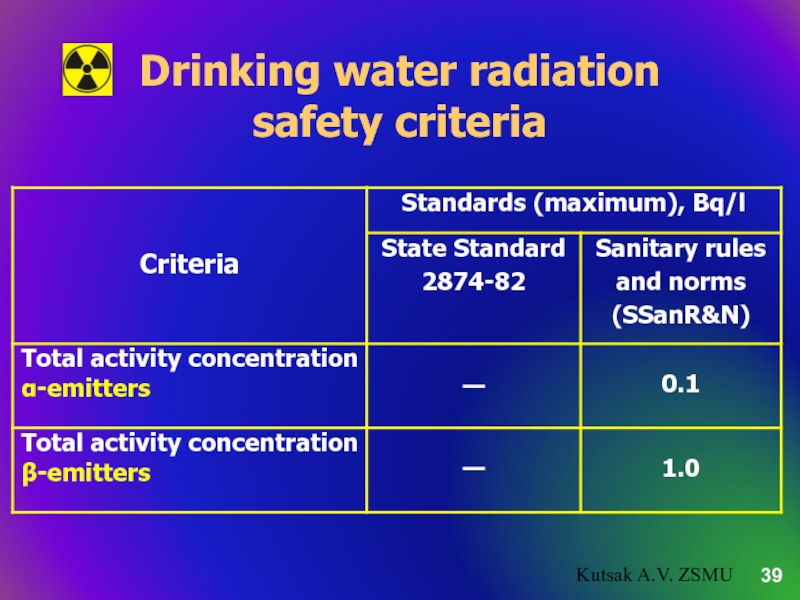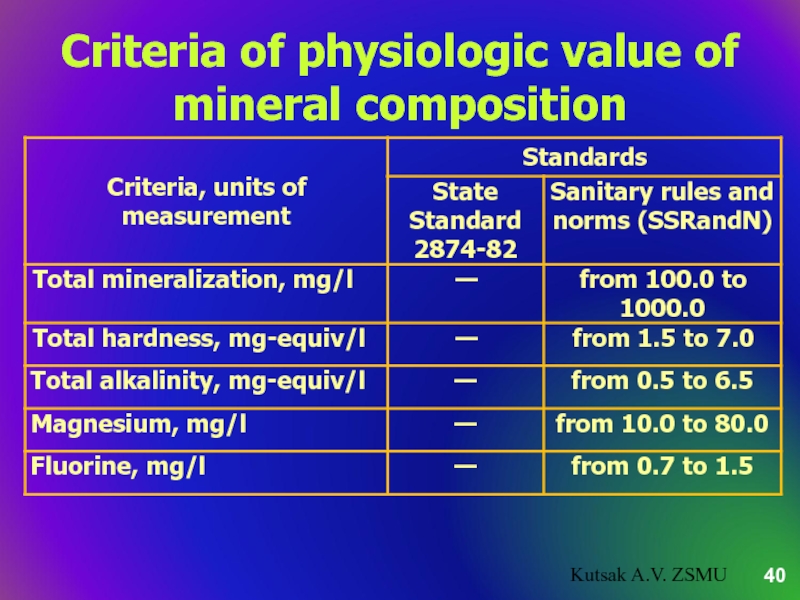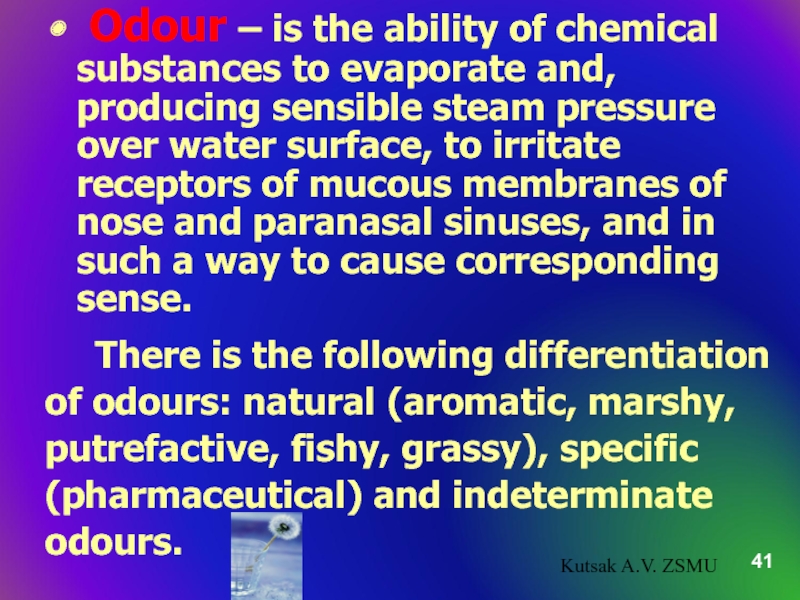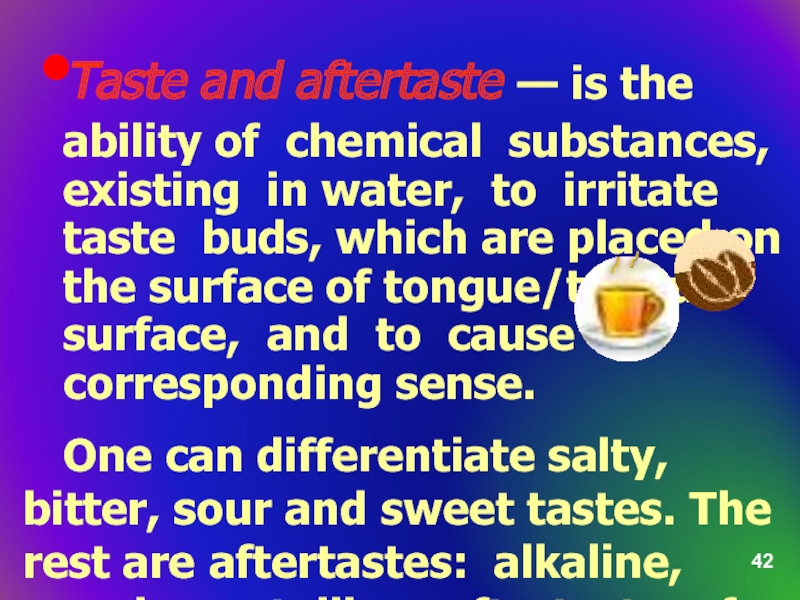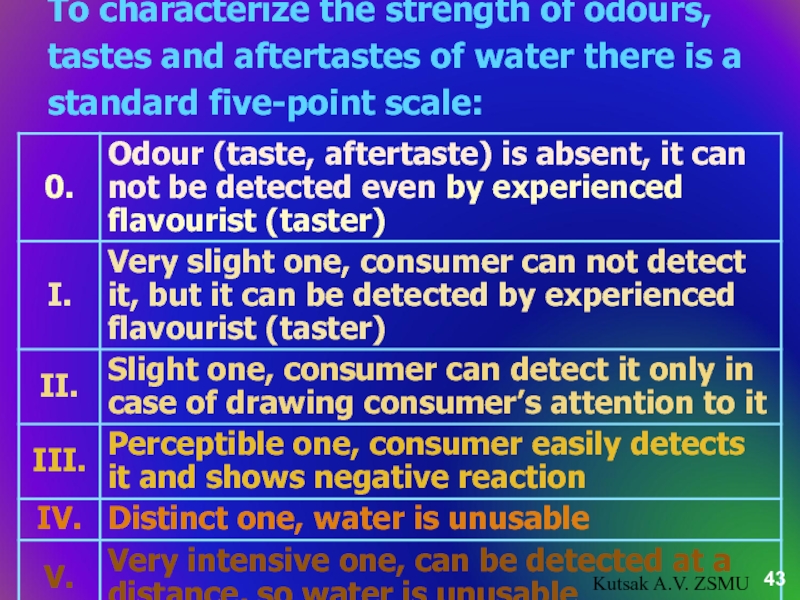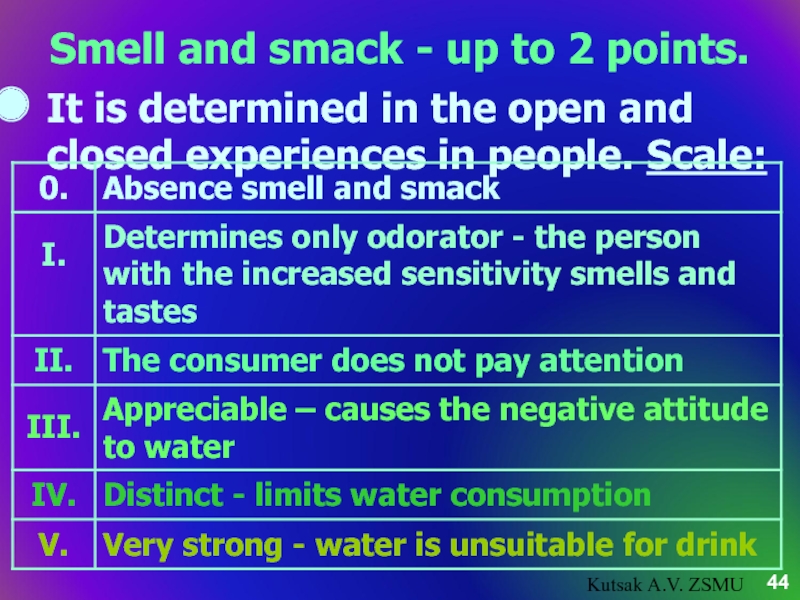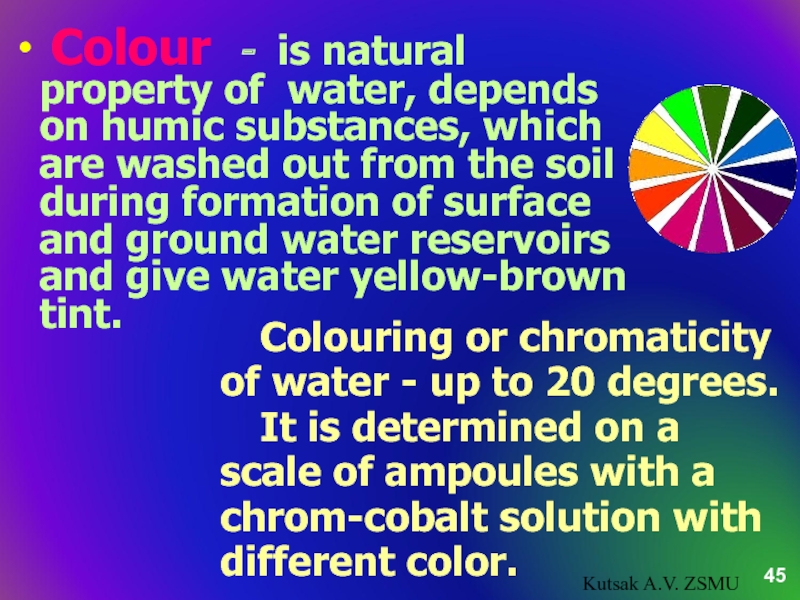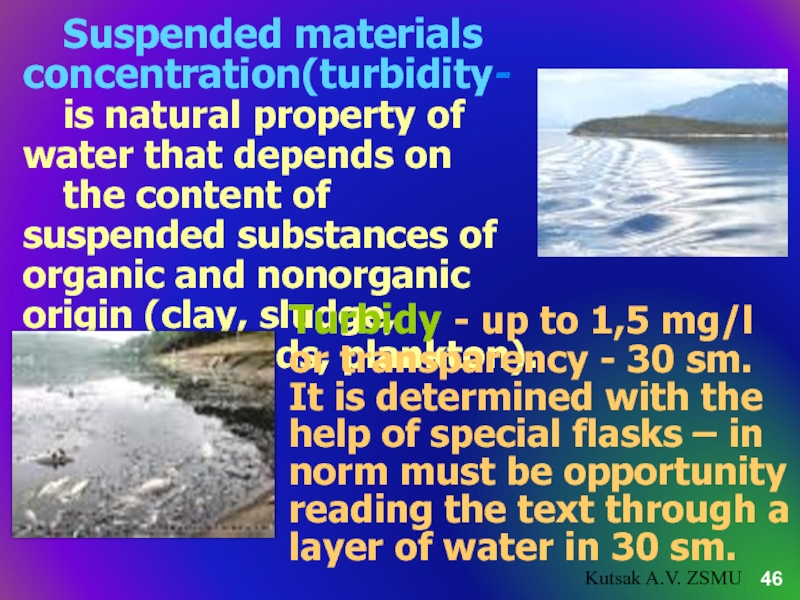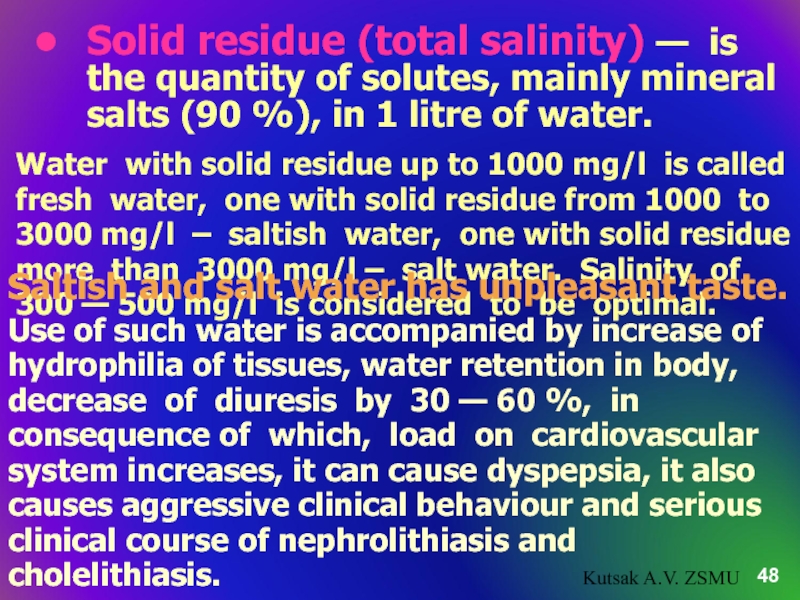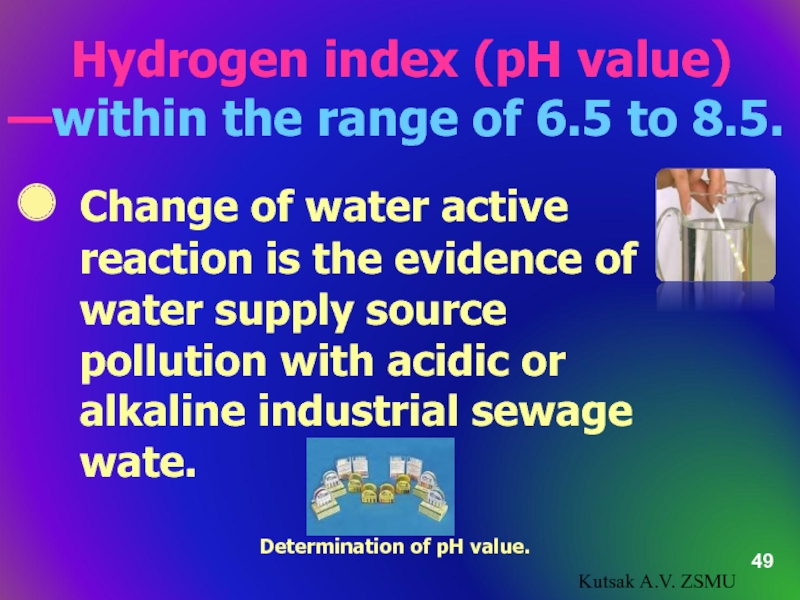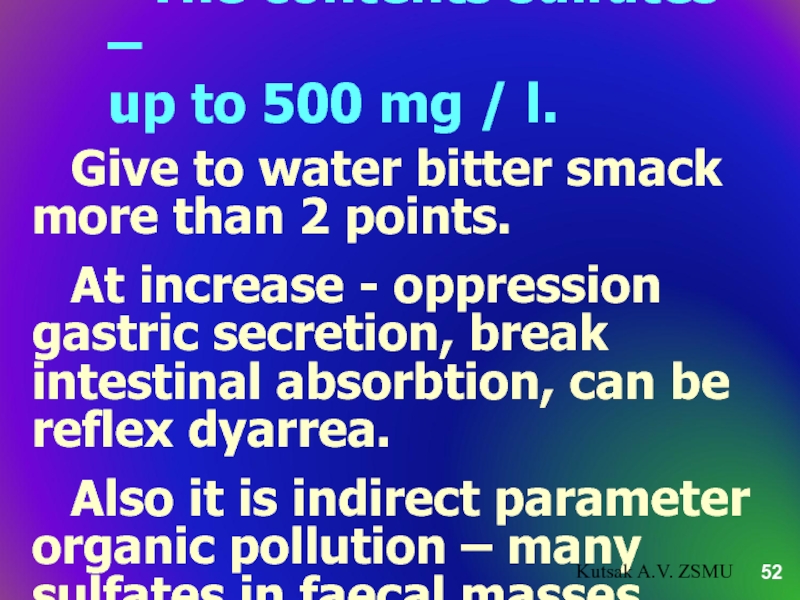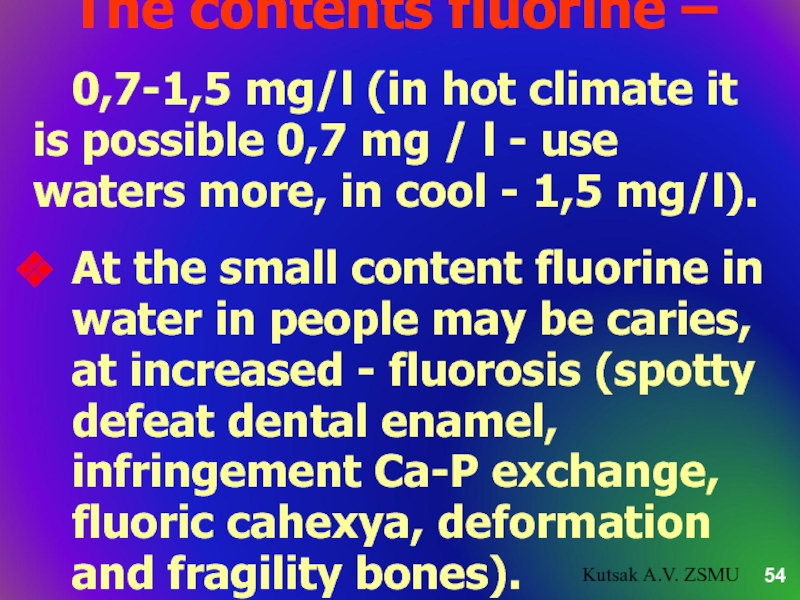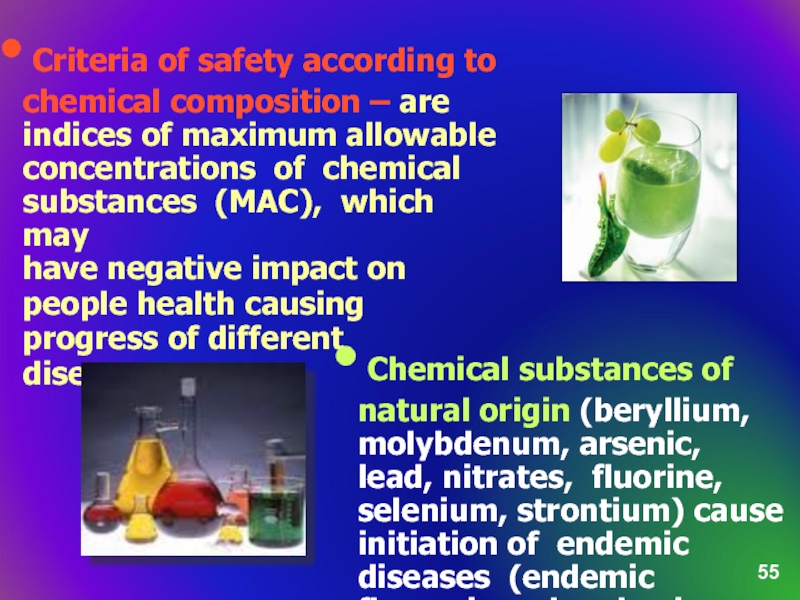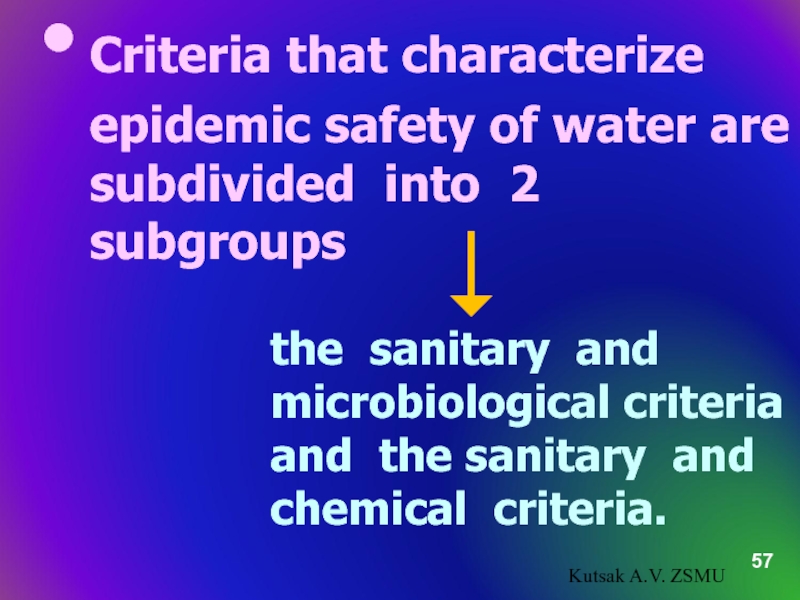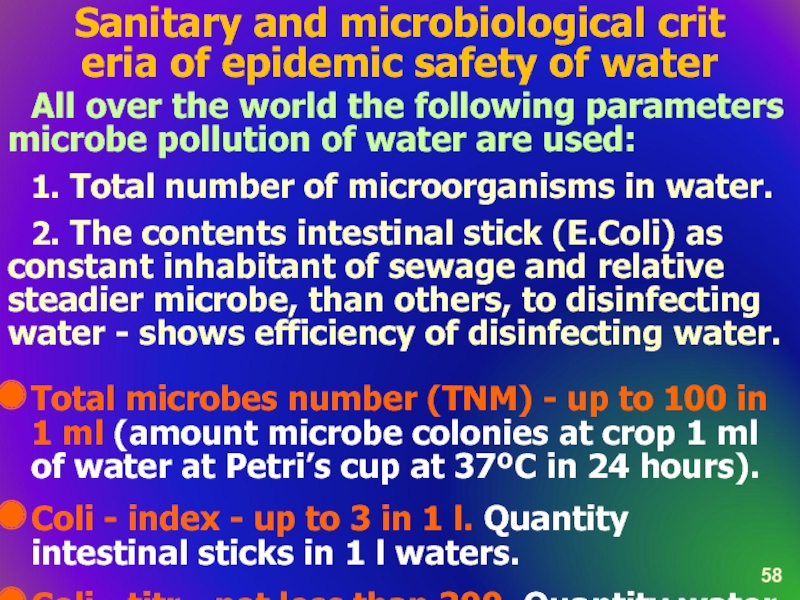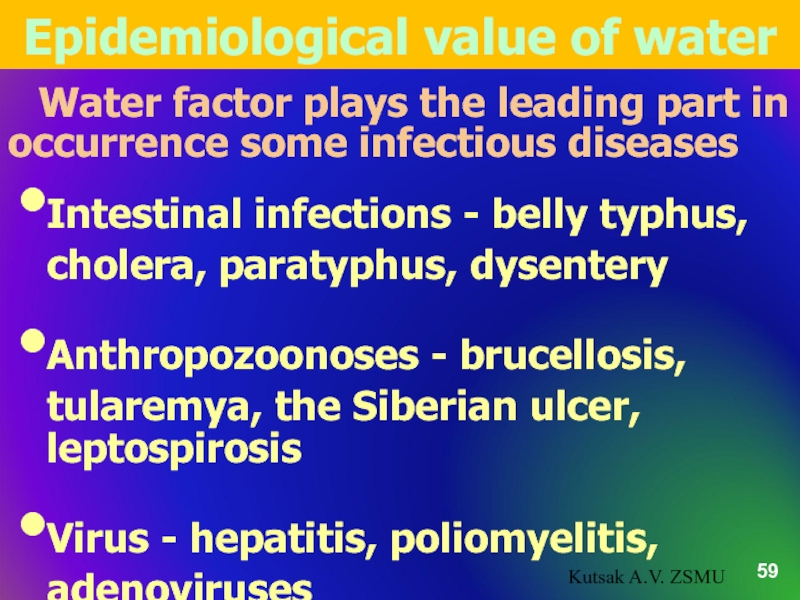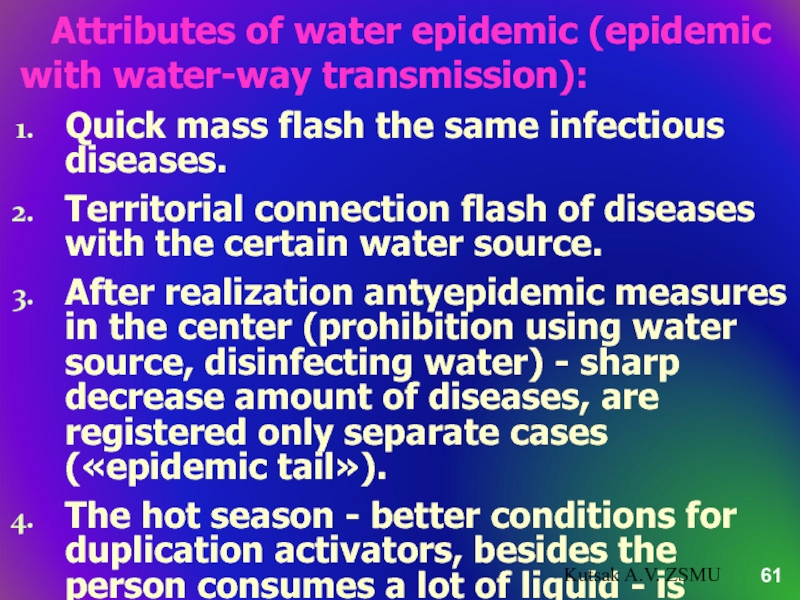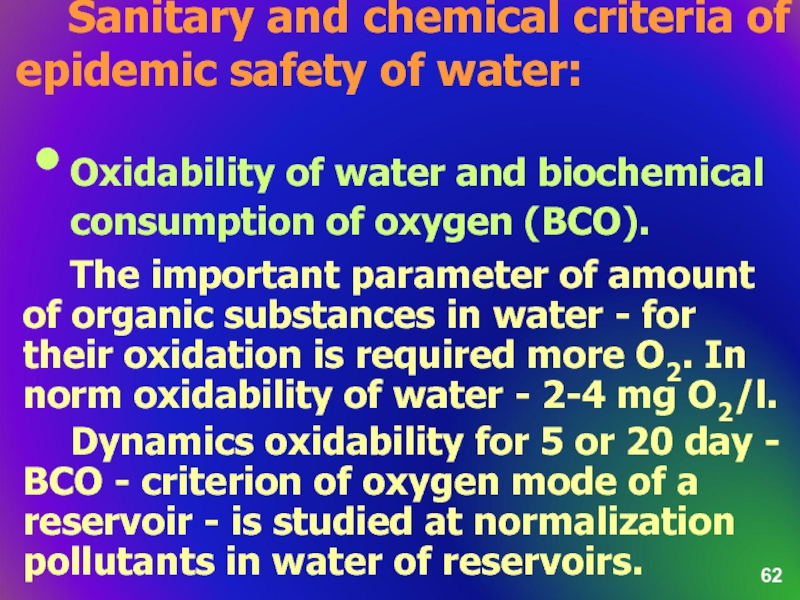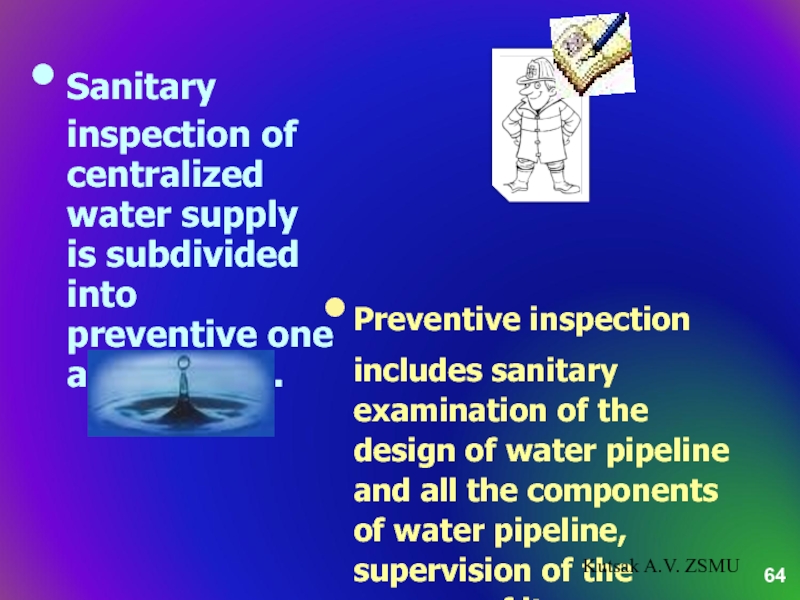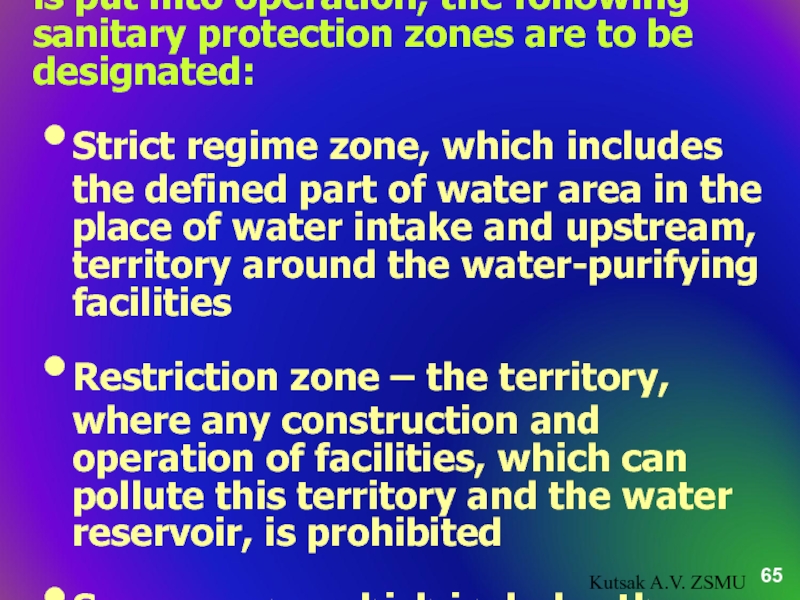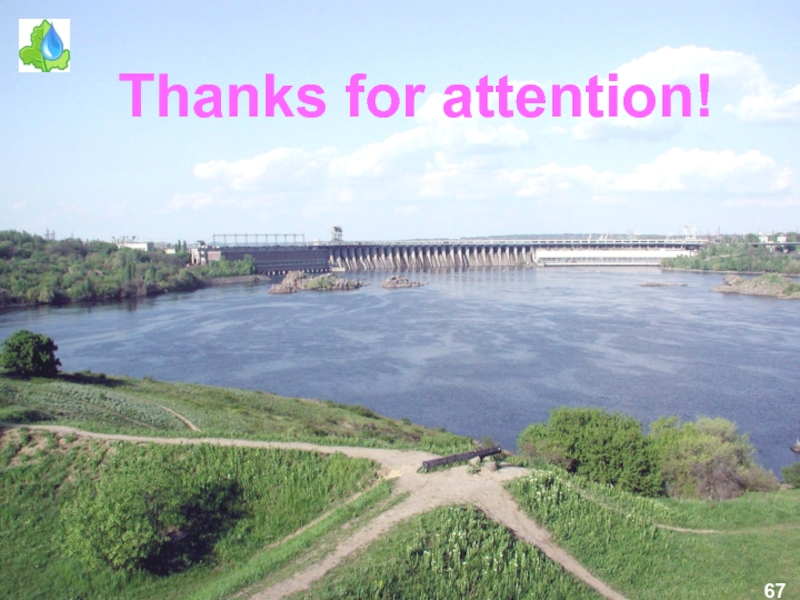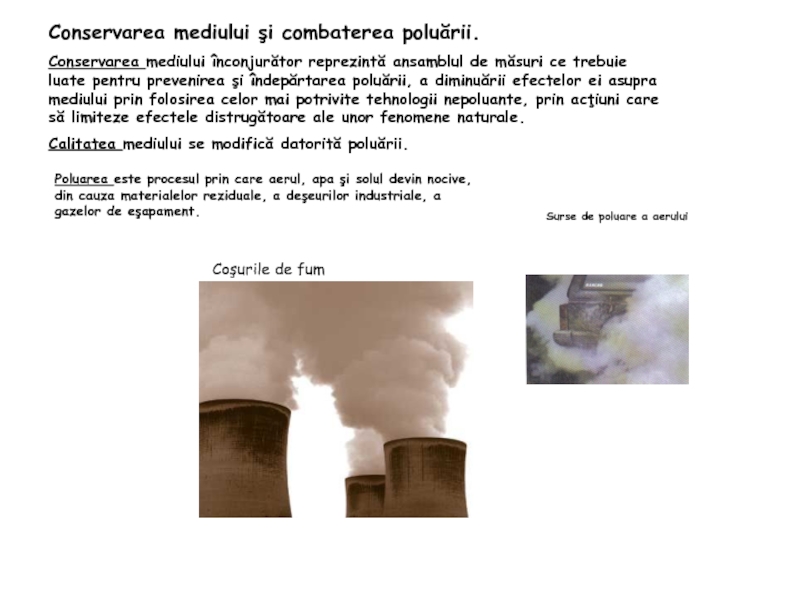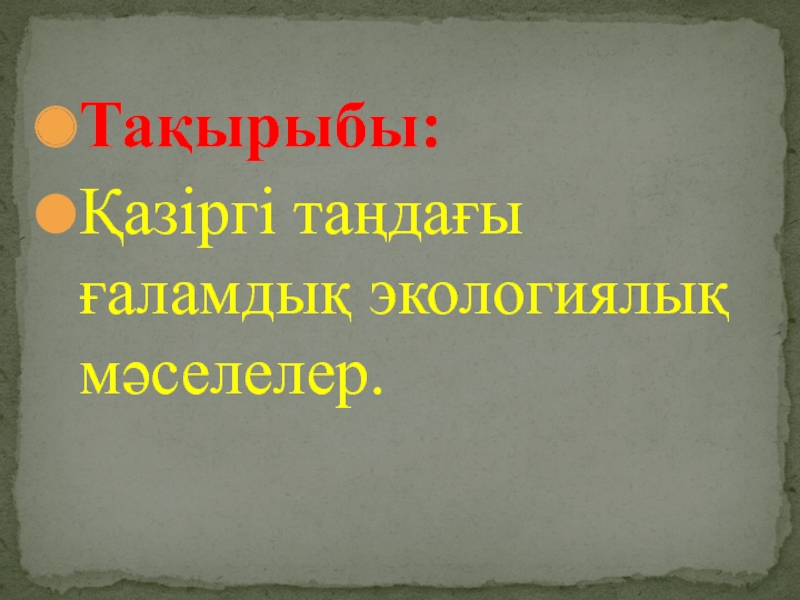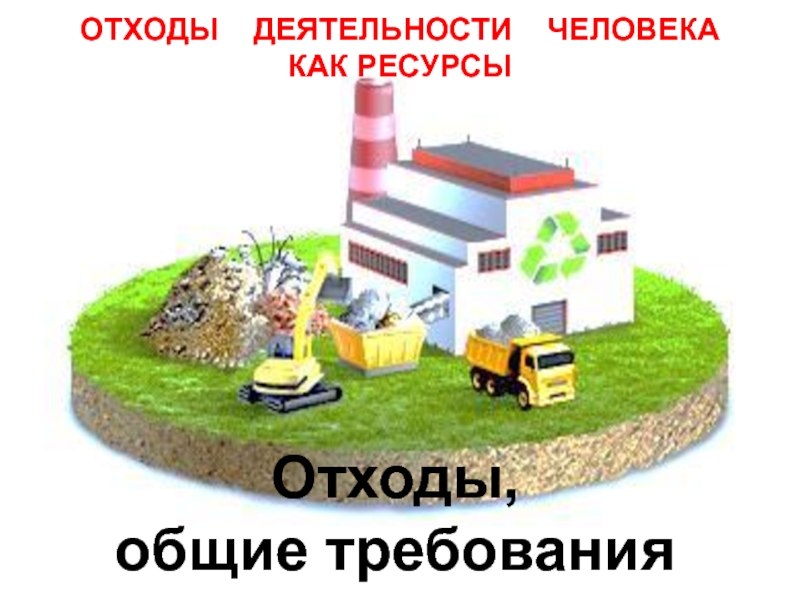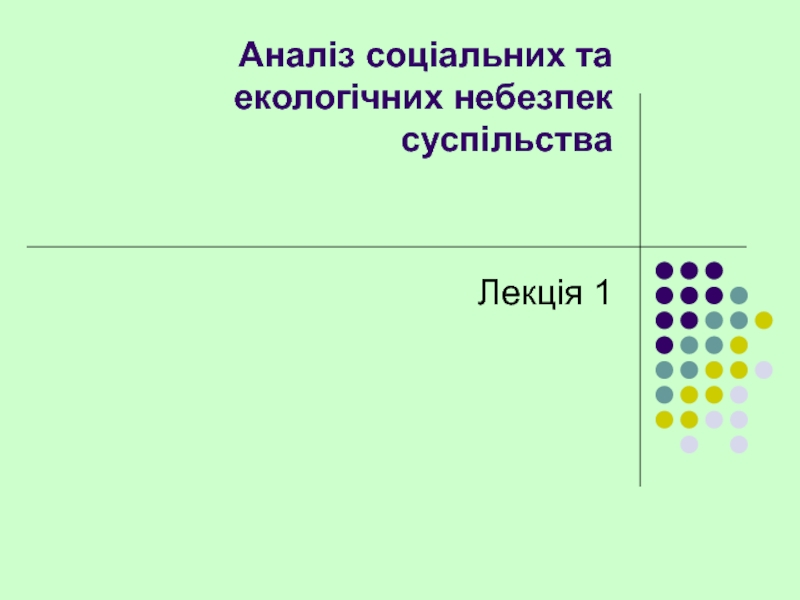The author: Kutsak А.V., assistant chair of general
hygiene and ecology
- Главная
- Разное
- Дизайн
- Бизнес и предпринимательство
- Аналитика
- Образование
- Развлечения
- Красота и здоровье
- Финансы
- Государство
- Путешествия
- Спорт
- Недвижимость
- Армия
- Графика
- Культурология
- Еда и кулинария
- Лингвистика
- Английский язык
- Астрономия
- Алгебра
- Биология
- География
- Детские презентации
- Информатика
- История
- Литература
- Маркетинг
- Математика
- Медицина
- Менеджмент
- Музыка
- МХК
- Немецкий язык
- ОБЖ
- Обществознание
- Окружающий мир
- Педагогика
- Русский язык
- Технология
- Физика
- Философия
- Химия
- Шаблоны, картинки для презентаций
- Экология
- Экономика
- Юриспруденция
Hygiene of water supply презентация
Содержание
- 1. Hygiene of water supply
- 2. Role in support of osmotic pressure
- 3. Water can participate in spread of infections
- 4. Simultaneous appearance of big number of enteric
- 5. Toxicological role of water
- 6. Balneal role of water
- 7. Sanitary-hygienic and domestic functions of water include:
- 8. Usage in agriculture (irrigation in crop and
- 9. Water supply sources are
- 10. Surface waters are divided
- 11. The main source of pollution of surface
- 12. Self-purification (natural purification) of open-air water reservoirs
- 13. Sanitary inspection includes three main stages:
- 14. Main task of sanitary-topographic inspection of water
- 15. The purpose of sanitary - technical inspection
- 16. Presence of intestinal infectious diseases (cholera,
- 17. During water sampling from open reservoir
- 18. Depending on water quality and water treatment
- 19. Kutsak A.V. ZSMU
- 20. Kutsak A.V. ZSMU 20
- 21. There are centralized and decentralized water supply
- 22. Water of I-class ground sources totally meets
- 23. Water of II-class ground sources may
- 24. Water of II-class sources have higher concentration
- 25. Water of III-class surface sources is of
- 26. There are 3 basic groups of methods:
- 27. Methods water cleaning. Water cleaning will be
- 28. Methods disinfecting of water and their hygienic
- 29. Physical methods of disinfecting: Boiling
- 30. Ozonization - action of atomic oxygen -
- 31. Chlorination water. At entering chlorine in water
- 32. Kinds of chlorination water On chlorine necessity
- 33. Deterioration organoleptics (smell) of water. Not always
- 34. Good organoleptic properties Optimal natural
- 35. Organoleptic properties of water are divided into
- 36. Organoleptic criteria of drinking water quality Kutsak A.V. ZSMU
- 37. Toxicological criteria of drinking water chemical composition safety Kutsak A.V. ZSMU
- 38. Criteria of drinking water epidemic safety Kutsak A.V. ZSMU
- 39. Drinking water radiation safety criteria Kutsak A.V. ZSMU
- 40. Criteria of physiologic value of mineral composition Kutsak A.V. ZSMU
- 41. Odour – is the ability of
- 42. Taste and aftertaste — is the ability
- 43. To characterize the strength
- 44. It is determined in the open and
- 45. Colour - is natural property of
- 46. Suspended materials concentration(turbidity- is natural property
- 47. Temperature influences
- 48. Solid residue (total salinity) — is the
- 49. Change of water active reaction is the
- 50. Total hardness — is the natural property
- 51. Give to water salty smack - in
- 52. Give to water bitter smack more than
- 53. Iron. The contents iron -
- 54. The contents fluorine – 0,7-1,5 mg/l
- 55. Criteria of safety according to chemical
- 56. Chemical substances that come in water
- 57. Criteria that characterize epidemic safety of water
- 58. All over the world the following parameters
- 59. Water factor plays the leading part in
- 60. Straight indexes - deterioration bacteria parameters of
- 61. Quick mass flash the same infectious diseases.
- 62. Oxidability of water and biochemical consumption of
- 63. Nitrogen substances (ammonia, nitrites, nitrates). Ammonia
- 64. Preventive inspection includes sanitary examination of the
- 65. Before the constructed water pipeline is put
- 66. Sanitary regular inspection is exercised using methods
- 67. Thanks for attention!
Слайд 1HYGIENE OF WATER SUPPLY
Ministry of the Public Health of Ukraine
Zaporozhe State
Слайд 2Role in support of osmotic pressure
and acid-base balance.
Participation in
Transportation function – delivery
of nutrients to cells with blood and
lymph, removal of waste products from
the organism with urine and sweat.
As a component of dietary intake and
a source of macro- and microelements supply to organism.
Hygienic significance of water
Water physiological functions:
Flexibility – about 65 % of body mass of adult person consists of water.
70 % of water is the intracellular water,
30 % - extracellular water (in blood),
(7%) - lymph and 23 % - intertissue fluid.
Participation in metabolism and interchange of energy.
Kutsak A.V. ZSMU
Слайд 3Water can participate in spread of infections in the following ways:
As
As a transfer factor of pathogens of the skin and mucous membrane diseases (when swimming or having another contact with water) trachoma, leprosy, anthrax.
As the habitat of disease carriers – anopheles mosquitoes.
EPIDEMIOLOGICAL AND TOXICOLOGICAL ROLE OF WATER
Kutsak A.V. ZSMU
Слайд 4Simultaneous appearance of big number of enteric infected people.
People who used
Morbidity level will stay high for the long period of time to the extent of water contamination and consumption.
After the taking of antiepidemic measures the outburst fades away and morbidity goes down drastically.
SYMPTOMS OF WATER EPIDEMICS:
Kutsak A.V. ZSMU
Слайд 5
Toxicological role
of water consists
in it containing chemical agents
that may negatively influence people health causing different diseases.
Kutsak A.V. ZSMU
Слайд 6 Balneal role of water
Water is used in medicinal
resort Baden-Baden
and also as tempering factor (bathing, swimming, rubdown).
Kutsak A.V. ZSMU
Слайд 7Sanitary-hygienic and domestic functions of water include:
Water usage for cooking and
Usage of water as means of keeping body, clothes, utensil, residential and public premises and industrial areas, settlements clean.
Watering of the green areas within settlements.
Sanitary-transport and disinfection functions of water – disposal of
residential and industrial waste through sewer system, waste processing on
plants, self-purification of water reservoirs.
Fire fighting, atmospheric
pollution clearing (rain, snow).
DOMESTIC AND ECONOMIC ROLE OF WATER
Kutsak A.V. ZSMU
Слайд 8Usage in agriculture (irrigation in crop and gardening, greenhouses, poultry and
Water supply system
Industry (food, chemical, metallurgy).
As the route of passenger and cargo transportation.
Economical functions of water:
Kutsak A.V. ZSMU
Слайд 9
Water supply sources are divided into ground and surface:
1. Middle waters
Middle waters are characterized by not very high, stable temperature (5-12°С), constant physical and chemical composition, steady level and considerable flow.
2. Underground waters that are located in aquifers above the first impermeable layer of soil and therefore.
CLASSIFICATION OF WATER SUPPLY SOURCES
3. Spring water, flowing out from aquifers that pinch out onto the surface due to descending on the hill slope, in deep ravine.
Spring water
Kutsak A.V. ZSMU
Слайд 10
Surface waters
are divided into flowing (running) and stagnant waters.
Open-air
Compared to ground waters, surfacewater sources are characterized by big amount of suspended substances, low clarity, higher colour due to humic substances that are washed away from the soil, higher content of organic compounds, presence of autochthonic micro flora and dissolved oxygen.
Kutsak A.V. ZSMU
Слайд 11The main source of pollution of surface water reservoirs are sewage
Sources of the surface water reservoirs pollution
Kutsak A.V. ZSMU
Слайд 12Self-purification (natural purification) of open-air water reservoirs
Self-purification (natural purification) of open
Hydraulic (mixing and dilution of pollutants by water of water reservoir)
Mechanical (precipitation/sedimentation of suspended solids)
Physical (solar radiation and temperature effect)
Biological (interaction of water plant organisms and microorganisms with sewage organisms that got into reservoir)
Chemical (elimination of contaminants as the result of hydrolysis)
Biochemical (conversion of some substances into other due to biological elimination.
Kutsak A.V. ZSMU
Слайд 13Sanitary inspection includes three main stages:
Sanitary-topographic inspection of water source environment.
Sanitary-technical
Sanitary-epidemiological inspection of area of water source location.
Technique of sanitary inspection
of water-supply sources
Kutsak A.V. ZSMU
Слайд 14Main task of sanitary-topographic inspection of water source is to discover
On the basis of sanitary-topographic inspection a map – layout of positional relationship of water source and listed objects.
Sanitary-topographic
Inspection.
Kutsak A.V. ZSMU
Слайд 15The purpose of sanitary - technical inspection is to give a
Kutsak A.V. ZSMU
Слайд 16
Presence of intestinal infectious diseases (cholera, typhoid, paratyphoid А, В, dysenteries,
virus hepatitis) among population.
Presence of epizootic diseases (tularaemia, brucellosis, anthrax, murrain) among rodents, domestic animal.
Sanitary condition of the settlement (pollution of the territory, methods of collection and disinfection of liquid and solid domestic and industrial waste).
Sanitary-epidemiological inspection is aimed to discover and consider the following:
Kutsak A.V. ZSMU
Слайд 17During water sampling from open reservoir or a well the temperature
Fig. 1. Thermometer for taking temperature of water in reservoirs and wells (а), bathometers for water sampling for analysis (b).
Water sampling from open reservoirs and wells is carried out using bathometers of different design (fig. 1-b).
Kutsak A.V. ZSMU
Слайд 18Depending on water quality and water treatment methods, which are necessary
Kutsak A.V. ZSMU
Слайд 21There are centralized and decentralized water supply systems.
Centralized system (water
Most often decentralized (local) water supply is realised using shaft or tube wells, and more rarely using groundwater intake structures (catchments). Underground (subterranean) water, which accumulates in waterbearing aquifer over the first water-holding horizon, is used in wells. Such water laying depth amounts to some dozens of meters.
Hygienic characteristics of water supply systems of settlements
Kutsak A.V. ZSMU
Слайд 22Water of I-class ground sources totally meets the concept of the
In this case water-supply diagram looks as follows:
where: 1 – ground source of water–supply
(artesian or not-artesian middle waters)
2 – artesian well
3 – lifting pump І
4 – disinfection
5 – pure water reservoir
6 – lifting pump station ІІ
7 – water-supply network.
Kutsak A.V. ZSMU
CLASSES AND METHODS OF WATER TREATMENT
1
2
3
4
5
6
7
Слайд 23
Water of II-class ground sources may contain hydrogen sulphide of mineral
In this case water supply diagram looks as follows:
1
2
3
4
5
6
7
8
where: 1 – ground source of water–supply
2 – artesian well
3 – lifting pump І
4 – special methods of water treatment
5 – disinfection
6 – pure water reservoir
7 – lifting pump station ІІ
8 – water-supply network.
Kutsak A.V. ZSMU
Слайд 24Water of II-class sources have higher concentration of suspended materials in
For purification of such water conventional methods of such treatment are used: microfiltration - to remove plankton, coagulation with water precipitation and further filtration.
Principal diagram of such water-supply is:
2
3
4
5
6
7
8
9
10
11
12
1
Kutsak A.V. ZSMU
Слайд 25Water of III-class surface sources is of such quality that it
For such water purification it is necessary to use additional stages of water clarification, application of oxidative and sorption methods, more efficient disinfection.
Kutsak A.V. ZSMU
Слайд 26There are 3 basic groups of methods:
Methods of water cleaning -
Methods disinfecting of water - microflora in water.
Special methods improvement quality of water – distillation, dechlorination, fluorization, defluorization, deodorization, decontamination, deactivation water.
Kutsak A.V. ZSMU
METHODS OF THE IMPROVEMENT
OF QUALITY OF WATER
Слайд 27Methods water cleaning.
Water cleaning will be carried out by upholding and
For acceleration cleaning used coagulation water - adding salts Al or Fe - are formed flakes with salts Са or magnesium in water.
Now use flocculants – polyacrylamid.
The control efficiency of water cleaning:
а) On оrganoleptic parameters - turbidy, colouring, smell, taste
b) On oxidability water.
Kutsak A.V. ZSMU
Слайд 28Methods disinfecting of water and their hygienic estimation
There are 2 groups
1) Physical
2) Chemical
Kutsak A.V. ZSMU
Слайд 29
Physical methods of disinfecting:
Boiling - good bactericidal effect, but expensive
UVR - 100 % effect, but needs the big power consumption and small volumes of water - in clean water UV pass through only 50 sm, in muddy - is even less.
Gamma irradiation - is used seldom - the complex equipment, threat of an irradiation of the personnel and the induced water radioactivity.
A ultrasonic irradiation - complex method, influence on the personnel.
Kutsak A.V. ZSMU
Слайд 30Ozonization - action of atomic oxygen - good bactericidal effect. The
Action ions of silver. «Sacred water» in churches. Ions of silver has bactericidal effect. Dearly method.
Chlorination water - most wide used method in view of cheapness.
Chemical methods disinfecting of water:
Kutsak A.V. ZSMU
Слайд 31Chlorination water.
At entering chlorine in water there is a hydrolysis of
The scheme of chlorination:
90 % of chlorine contacts with various substances in water and inactivated (chlorine absorbing), there is residual or free chlorine - for sufficient bactericidal effect it should be 0,3-0,5 mg/l (below - there is no bactericidal effect, is higher - change a smell of water more than 2 points).
Chlorine absorbing + residual chlorine = chlorine necessity water.
It is determined at skilled chlorination - on practical lessons. Kutsak A.V. ZSMU
Слайд 32Kinds of chlorination water
On chlorine necessity or chlorination by normal dozes
For improvement bactericidal effect there are other kinds of chlorination:
1) Superchlorination - application big dozes of the chlorine exceeding chlorine necessity waters. It is used for very much polluted waters, unknown waters on bacteria indications (field conditions), on epidemic indications. Water then demands dechlorization - through the activated coal, hyposulfit.
2) Double chlorination - entering chlorine before and after water cleaning - is increased exposition action of chlorine, but formation toxic chlorine-organic substances raises.
3) Chlorination with ammonization - entering into water chlorine and ammonia - are formed chloramines - the greater bactericidal effect, there is no «chemist's» smell, as at usual chlorination when in water can be formed chlorphenols. Kutsak A.V. ZSMU
Слайд 33Deterioration organoleptics (smell) of water.
Not always reliable disinfecting (viruses of a
At pollution water at chlorination are formed toxic chlorine-organic substances such as chloroform, tetrachloretylen, having mutagen and cancerogen activity.
Lacks water chlorination:
Kutsak A.V. ZSMU
Слайд 34
Good organoleptic properties
Optimal natural mineral composition
Toxicological safety
Epidemiologic safety
Water radioactivity –
General hygienic requirements to drinking water include the following:
Kutsak A.V. ZSMU
Слайд 35Organoleptic properties of water are divided into 2 subgroups:
Physical
Chemical and organoleptic – content of particular chemical substances, which can irritate receptors of corresponding analyzers and cause one sense or another. Kutsak A.V. ZSMU
Hygienic characteristics of water quality criteria
Слайд 41 Odour – is the ability of chemical substances to evaporate
There is the following differentiation of odours: natural (aromatic, marshy, putrefactive, fishy, grassy), specific (pharmaceutical) and indeterminate odours.
Kutsak A.V. ZSMU
Слайд 42Taste and aftertaste — is the ability of chemical substances, existing
One can differentiate salty, bitter, sour and sweet tastes. The rest are aftertastes: alkaline, marshy,metallic, aftertaste of mineral oil.
Kutsak A.V. ZSMU
Слайд 43 To characterize the strength of odours, tastes and aftertastes of water
Kutsak A.V. ZSMU
Слайд 44It is determined in the open and closed experiences in people.
Smell and smack - up to 2 points.
Kutsak A.V. ZSMU
Слайд 45 Colour - is natural property of water, depends on humic
Colouring or chromaticity of water - up to 20 degrees.
It is determined on a scale of ampoules with a chrom-cobalt solution with different color.
Kutsak A.V. ZSMU
Слайд 46Suspended materials concentration(turbidity-
is natural property of water that depends on
the content of suspended substances of organic and nonorganic origin (clay, sludge, organic colloids, plankton).
Turbidy - up to 1,5 mg/l or transparency - 30 sm. It is determined with the help of special flasks – in norm must be opportunity reading the text through a layer of water in 30 sm.
Kutsak A.V. ZSMU
Слайд 47 Temperature influences
greatly on:
Organoleptic properties of
According to the international standard the temperature should not exceed 25°C, cool water with temperature (12–15°С) is considered to be the best water.
Rate and intensity of water purification and disinfection processes at water supply stations.
Temperature – 12-150C. Below – may be cold diseases, at higher - than change оrganoleptics water.
Kutsak A.V. ZSMU
Слайд 48Solid residue (total salinity) — is the quantity of solutes, mainly
Water with solid residue up to 1000 mg/l is called fresh water, one with solid residue from 1000 to 3000 mg/l – saltish water, one with solid residue more than 3000 mg/l – salt water. Salinity of 300 — 500 mg/l is considered to be optimal.
Saltish and salt water has unpleasant taste.
Use of such water is accompanied by increase of hydrophilia of tissues, water retention in body, decrease of diuresis by 30 — 60 %, in consequence of which, load on cardiovascular system increases, it can cause dyspepsia, it also causes aggressive clinical behaviour and serious clinical course of nephrolithiasis and cholelithiasis.
Kutsak A.V. ZSMU
Слайд 49Change of water active reaction is the evidence of water supply
Hydrogen index (pH value) —within the range of 6.5 to 8.5.
Determination of pH value.
Kutsak A.V. ZSMU
Слайд 50Total hardness — is the natural property of water that depends
We differentiate general, reduced, constant and carbonate hardness.
Ca(HCO3)2 = CaCO3 + H2O + CO2.
Mg(HCO3)2 = MgCO3 + H2O + CO2
Sudden change from soft water to hard water can cause dyspepsia. In regions with hot climate use of water with high hardness causes deterioration of urolithiasis clinical course.
Water with hardness value more than 10 mg-equiv/l increases endemic goiter risk. High hardness causes dermatitis initiation.
Kutsak A.V. ZSMU
Слайд 51Give to water salty smack - in the big concentration -
At increasing chlorides in water it is violations of water-electrolit exchange and function of kidneys.
«The Salt hypertension» - in areas with salty water arterial hypertension meets in 4 times more often.
At concentration chlorides more than 500 mg/l - oppression secretion and acidity of gastric juice.
It is the indirect parameter of organic pollution water by household sewage - chlorides is a lot in urine. Kutsak A.V. ZSMU
The contents chlorides –
up to 350 mg/l.
Слайд 52Give to water bitter smack more than 2 points.
At increase
Also it is indirect parameter organic pollution – many sulfates in faecal masses.
The contents sulfates –
up to 500 mg / l.
Kutsak A.V. ZSMU
Слайд 53Iron.
The contents iron - up to 0,3 mg/l.
4Fe(OH)2 +
Fe hydroxide (III) dissolves poorly and forms brown flocks
in water that causes colour and concentration of suspended materials in water.
Kutsak A.V. ZSMU
Слайд 54The contents fluorine –
0,7-1,5 mg/l (in hot climate it is
At the small content fluorine in water in people may be caries, at increased - fluorosis (spotty defeat dental enamel, infringement Са-Р exchange, fluoric cahexya, deformation and fragility bones).
Kutsak A.V. ZSMU
Слайд 55 Criteria of safety according to chemical composition – are indices
have negative impact on people health causing progress of different diseases.
Chemical substances of natural origin (beryllium, molybdenum, arsenic, lead, nitrates, fluorine, selenium, strontium) cause initiation of endemic diseases (endemic fluorosis and endemic caries). Kutsak A.V. ZSMU
Слайд 56Chemical substances that come
in water as a result of industrial,
They include heavy metals, detergents, pesticide, synthetic-base polymers.
Their concentration in water must be nonhazardous for the health of people and their descendants when they use such water permanently for the whole life.
Such concentrations we call maximum allowable concentrations (MAC). Kutsak A.V. ZSMU
Слайд 57Criteria that characterize epidemic safety of water are subdivided into 2
the sanitary and microbiological criteria and the sanitary and
chemical criteria.
Kutsak A.V. ZSMU
Слайд 58All over the world the following parameters microbe pollution of water
1. Total number of microorganisms in water.
2. The contents intestinal stick (E.Coli) as constant inhabitant of sewage and relative steadier microbe, than others, to disinfecting water - shows efficiency of disinfecting water.
Total microbes number (TNM) - up to 100 in 1 ml (amount microbe colonies at crop 1 ml of water at Petri’s cup at 37ºС in 24 hours).
Coli - index - up to 3 in 1 l. Quantity intestinal sticks in 1 l waters.
Coli - titr - not less than 300. Quantity water in ml in which 1 intestinal stick is found.
Kutsak A.V. ZSMU
Sanitary and microbiological crit
eria of epidemic safety of water
Слайд 59Water factor plays the leading part in occurrence some infectious diseases
Epidemiological
Intestinal infections - belly typhus, cholera, paratyphus, dysentery
Anthropozoonoses - brucellosis, tularemya, the Siberian ulcer, leptospirosis
Virus - hepatitis, poliomyelitis, adenoviruses
The pathogenic elementary - lamblya, amoebas, balantides
Parasitic forms.
Kutsak A.V. ZSMU
Слайд 60Straight indexes - deterioration bacteria parameters of water, presence pathogenic microbes
Indirect
Attributes of epidemiological
danger of water:
Kutsak A.V. ZSMU
Слайд 61Quick mass flash the same infectious diseases.
Territorial connection flash of diseases
After realization antyepidemic measures in the center (prohibition using water source, disinfecting water) - sharp decrease amount of diseases, are registered only separate cases («epidemic tail»).
The hot season - better conditions for duplication activators, besides the person consumes a lot of liquid - is reduced acidity of gastric juice - barrier to microbes.
Attributes of water epidemic (epidemic with water-way transmission):
Kutsak A.V. ZSMU
Слайд 62Oxidability of water and biochemical consumption of oxygen (BCO).
The important
Dynamics oxidability for 5 or 20 day - BCO - criterion of oxygen mode of a reservoir - is studied at normalization pollutants in water of reservoirs.
Dissolved oxygen — is quantity of oxygen that is available in 1 litre of water. Kutsak A.V. ZSMU
Sanitary and chemical criteria of epidemic safety of water:
Слайд 63Nitrogen substances (ammonia, nitrites, nitrates).
Ammonia and nitrites in water practically
At the increased contents nitrates and nitrites (the reason: organic pollution of reservoir or going in it nitric fertilizers) it is possible special illness - water-nitrate methaemoglobynaemya (are especially dangerous to children of the first months of life).
Слайд 64Preventive inspection includes sanitary examination of the design of water pipeline
Sanitary inspection of centralized water supply is subdivided into preventive one and regular.
Kutsak A.V. ZSMU
Слайд 65Before the constructed water pipeline is put into operation, the following
Strict regime zone, which includes the defined part of water area in the place of water intake and upstream, territory around the water-purifying facilities
Restriction zone – the territory, where any construction and operation of facilities, which can pollute this territory and the water reservoir, is prohibited
Survey zone, which includes the whole water supply network.
Kutsak A.V. ZSMU
Слайд 66Sanitary regular inspection is exercised using methods of more detailed regular
Such inspection is necessarily accompanied by water sampling and by the laboratory analysis of water.
Kutsak A.V. ZSMU
